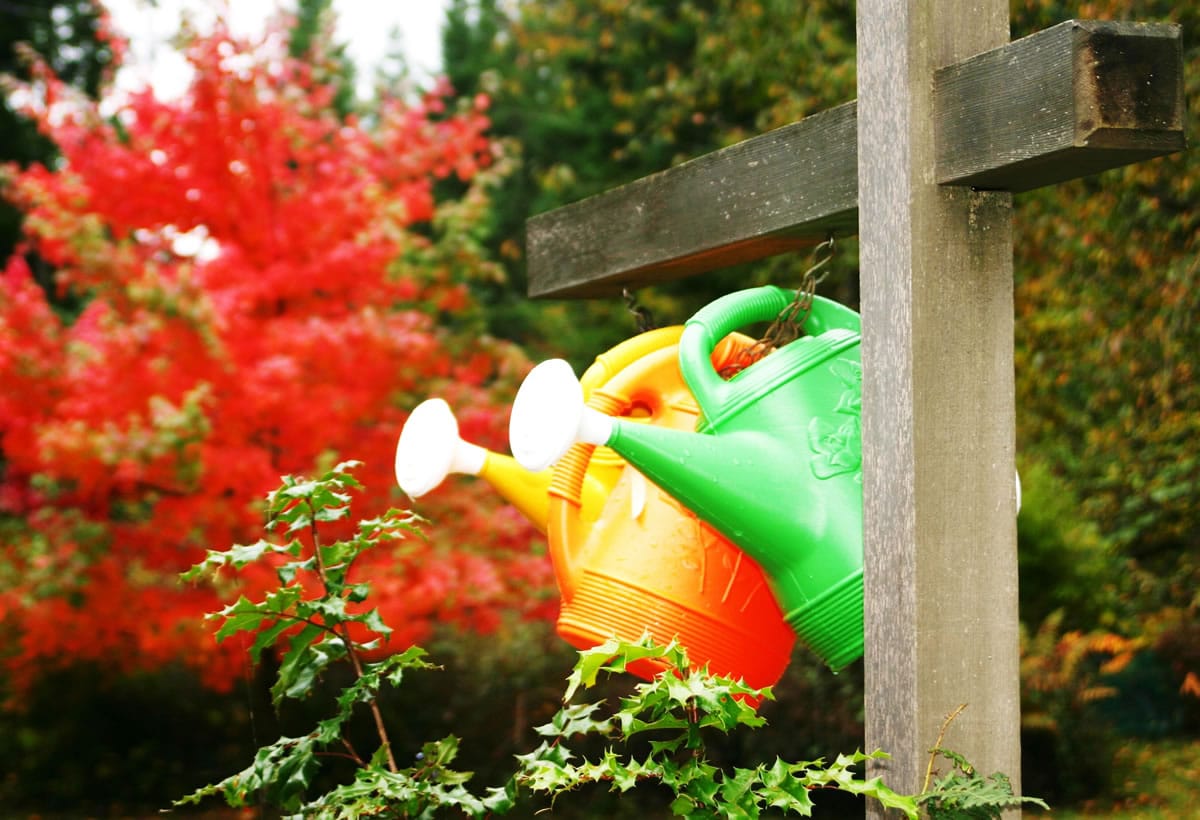Officially, autumn has arrived in the Pacific Northwest. But my garden watering and summer upkeep go on as usual. As the season progresses and after rainfall returns, we can finally begin fall planting and transplanting. Empty spaces in the flower border make it clear where we can fit in one more perennial or a group of spring-flowering bulbs. It’s also time to add large-scale trees and shrubs to the garden.
During the October meeting of the Clark County Hardy Plant Society, the conversation turned to autumn chores. We always wonder what to do in the fall garden as late perennials continue to flower and the focus turns to autumn foliage. This month’s meeting featured our annual plant exchange, and by the end of the event, everyone was ready to get their newest acquisitions home and in the ground.
Lately, I’d be happy just to lie down on the lawn and look up into the ever-changing autumn sky but this is the ideal time to begin general garden cleanup in
preparation for winter. In spring, there are a million and one jobs to tackle. In fall, garden activities seem to come one at a time. We attune our pace to the season, dragging our feet through piles of leaves and taking every opportunity to sit on a garden bench and catch the last rays of sun on our faces.
So we prepare our gardens and our thoughts for winter as we plan in advance for the following spring. Trees, shrubs, perennials and bulbs benefit from fall planting because the lower temperature of the air signals the plant to go dormant while the warmer temperature of the soil encourages strong root growth. Typical fall rains assure that the plants receive the water they need to establish themselves in the garden.
With our generally mild weather, the Northwest gardener can find something to do in the garden all year long. There is always some pruning or weeding to be done. Seasonal rains make it easier to pull the most tenacious weeds. As plant growth reaches the end of its annual cycle, garden cleanup becomes the number one chore in the garden. Remove spent plant material early in the season and stay on top of it to avoid becoming overwhelmed.
Pull out all dead or dying annual plants as they lose their luster. Add a light layer of compost just to fill in the gaps and to smooth out lumps, giving the garden border a maintained appearance. In late fall or early winter, when frost returns and garden soil begins to chill, add a heavier layer of compost to keep the ground cold. This prevents plants from emerging from dormancy before their natural cycle.
Put healthy pest-free material in the compost pile. Any plant material that is diseased or insect infested should be removed immediately from the garden. The fallen leaves of anthracnose-infected dogwood trees and rose debris with black spot or aphids should be destroyed or thrown out with the trash. Remove any fruit that has fallen from trees or vines as well.
Raking leaves is synonymous with autumn chores. Leaves need to be removed from lawns since unshredded leaves can smother and kill the grass below. Once removed, these leaves can be used as leaf mulch or added to the compost pile. If added to compost, shred the leaves to help them decompose. Better yet, save the leaves and use them as leaf mulch directly on top of the soil in flower beds and borders. Leaf mulch acts as a weed suppressor, helps hold moisture in the soil and protects tender roots against cold and wind.
As long as you are filling empty spaces with new plants, try sowing the seeds of hardy annuals. Hardy annual seeds can handle being frozen in the soil. Most self-seeding annuals are considered hardy seeds. These will dawdle through the winter months but roots will become established by spring and plants will likely emerge early in the season.
In fall there is a point in time, a day, when every gardener asks another gardener whether or not they feel the change in the air. The sunlight is still strong and the days actually look warm, but there is crispness in the air. A bite, a nip, a chill. Autumn is upon us. As if by instinct, I carry a long-sleeved flannel shirt with me as I begin my day. For the gardener, it’s simply an additional garden tool to keep on hand.
Robb Rosser is a WSU-certified master gardener. Reach him at Write2Robb@aol.com.



